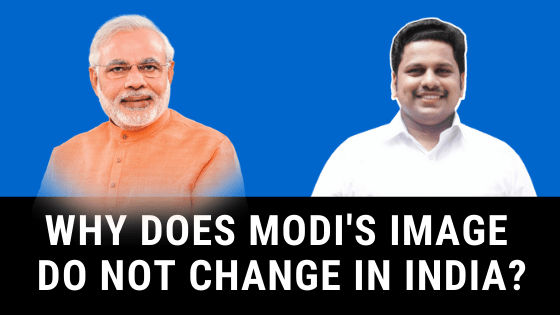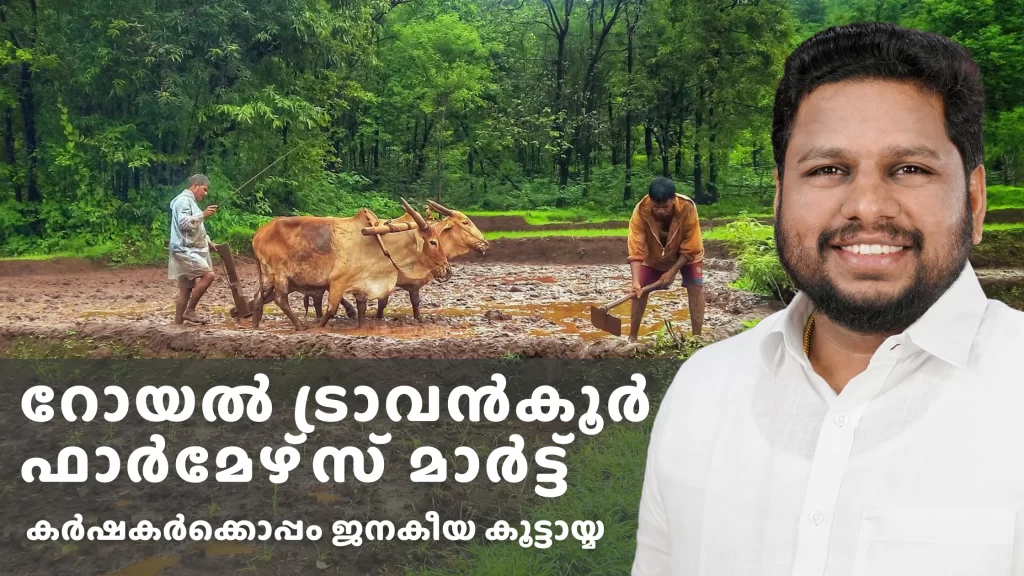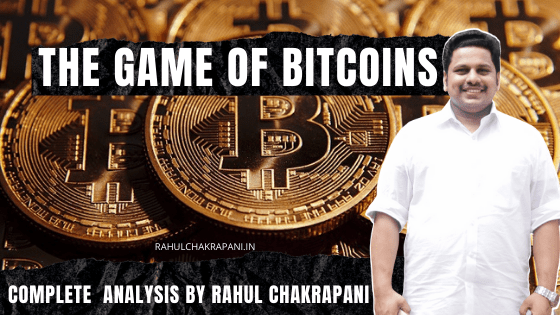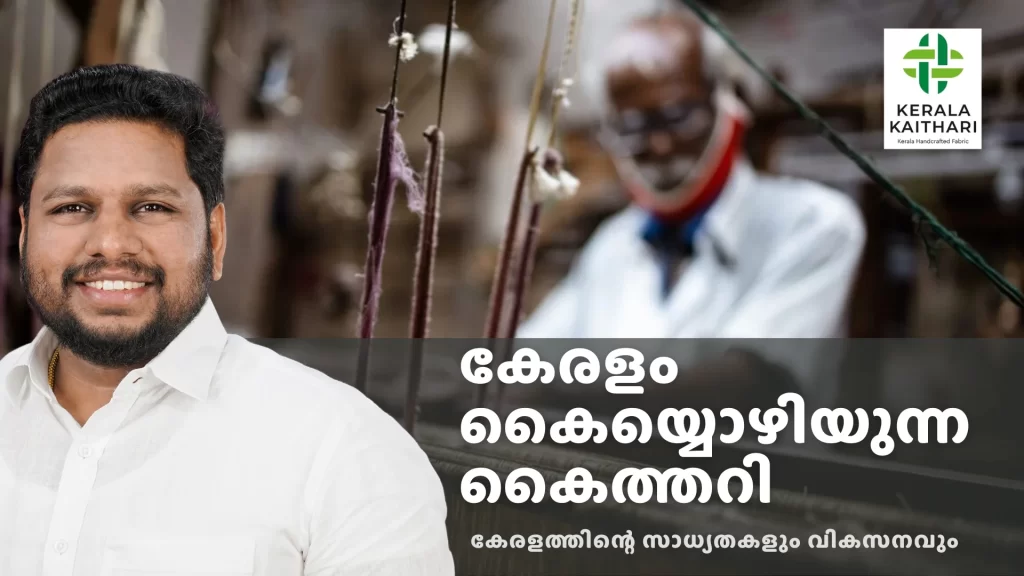A survey Was happened in April 2019 [General Elections]
the people of our country were asked about
Why is Modi your first preference? And interestingly why is Rahul Gandhi second choice?
People supporting Modi said: Except for Unemployment, they [Modi Govt.] have done good work on other issues.
question: But Unemployment should be your biggest issue, right?
Person Answer: Yes, Unemployment is the biggest issue. But they’ve started working on it, In the next term, they’ll work more on it [unemployment].
In spite of the deep economic and social impacts of Modi Govt’s.
major policy decisions, people are not criticising [finding fault with] him (Modi).
In fact, they are praising him [Modi]. This is a very unique [special] situation
where only the credit for positive results go to PM Modi and not the credit for negative results.
So, many political journalists and experts claimed that
“PM Modi has developed a Teflon image” which is a term used frequently in political science.
Teflon (C2F4)n is a chemical compound used in non-stick frying pans.
You might have seen them in many ads.
“…I’ve chosen Prestige non-stick cookware which doesn’t have any harmful chemicals. And, it comes with a 5-layer non-stick coating.”
Teflon leaders are the ones,
on whom criticism never sticks, no matter how much they are criticised.
On the other end are velcro leaders (Velcro – found in footwear, etc for fastening)
on whom even the slightest form of criticism sticks to their image.
Every leader, both political & non-political could be placed somewhere in between this scale.
Experts feel that PM Modi is on the Teflon side of the scale
As a result, the deep impact (effect) on the Indian economy due to COVID-19
might have very less effect on PM Modi’s political ambition.
The main reason behind this is PM Modi is not just a political leader. He is almost, a spiritual leader too.
Teflon and “Spiritual”
On 8th Nov 2016 PM Modi announced that ₹ 500 & ₹ 1,000 currency notes will be withdrawn.
After one month [Dec 2016] the same story happened in Venezuela, too
where President Nicolás Maduro announced that he was cancelling the 100-bolivar (Bs. F)
currency notes as those notes were in the mafia’s possession (in the hands of the mafia).
But when he announced that the 100-bolivar currency notes will not be legal tender after 3 days,
people came on roads to protest against this decision.
But no such protests happened in India. (during demonetisation)
People supported this decision in spite of knowing that demonetisation
neither brought back black money nor infiltration was under control and,
even the other objectives [targets] of the Govt. were not completed.
In spite of all these, many did not criticise (find fault with) PM Modi.
They felt at least, he [Modi] was trying (to do something good).
This was the first indication about PM Modi’s Teflon image.
PM Modi is not the only leader about whom this word [“Teflon leader”] is being used.
Japanese PM Shinzō Abe,
American Former President Donald Trump,
Italian interior minister Matteo Salvini,
and Polish politician Jarosław Kaczyński.
This term has been used for all these politicians because
in spite of their corruption and sex scandals, the impact on their image is very less.
Researchers feel that such leaders have some common aspects (features).
They are seen as extroverted and outgoing (socially confident) which appeals to voters.
But this definition alone, cannot explain PM Modi’s Teflon image.
We will have to do an in-depth study on this.
There are several reasons behind this Teflon image.
Like nationalism, Hindu majoritarianism, control over media, financial advantage & a weak opposition.
We will not discuss these factors in this video as they’ve been already discussed.
Instead, we will see what form has this Teflon image taken?
We had seen the form of this image from May 2019
when PM Modi decided to meditate in Kedarnath after [election] campaigning.
As always, Media paid more attention to this. they said :
[…”Now you’ll be able to see from the cave, after meditating for the whole night today morning, [PM Modi] just came out”…]
That was a point to show us,
PM Modi’s image was not just of a political leader but also of a spiritual leader.
As a result, things that could weaken a normal political leader’s career [profession],
like the economic slowdown, we’re not making any impact on PM Modi’s image.
Asim Ali, a research associate at the Centre for Policy Research, also spoke about it in his recent article.
And he points out that the way PM Modi uses the Hindi language is responsible for his spiritual image.
ScoopWhoop had created a quiz on the words used by PM Modi in “Atmanirbar”[self-reliant] speech.
But we need not focus on the fact that PM Modi is using difficult Hindi words.
Instead, we should focus on his choice of words.
To describe the problems of migrant workers, PM Modi used the words
Sacrifice [“Tyaag”], Penance [“Tapasya”] and Trial (test) by fire [“Agni Pariksha”]
PM Modi called Demonetisation, a sacrifice [“Yagna”] against corruption.
When he gave a speech in support of Corona warriors, he asked people to perform 7 activities.
which was almost, similar to asking people to take 7 promises (vows) [during an Indian marriage].
PM Modi uses many religious texts in his speeches, too.
[…”The [Kurukshetra] war in Mahabharata was won in 18 days. – This war against Corona[virus] will take 21 days”…]
All these things help in developing his spiritual image.
Language is one factor.
The other factor is the way PM Modi phrases (chooses the words for) his major policy schemes during his communication.
Benjamin Franklin used an important tool in his political career which is now called the “Benjamin Franklin” effect.
This can be found in PM Modi’s speeches, too.
According to this effect, if you ask a favour (help) from someone and if he/she accepts to help,
then the chances of him/her accepting your second request for a favour [help] also increases and he/she would start liking you more.
This happens in our brain due to “cognitive dissonance”
This is because if someone asks us for a second favour, we make up our mind [assume] that we like them.
And through his policy announcements, PM Modi doesn’t give us an instruction nor an order. but he asks us for a favour, REQUESTS.
For the Clean India Mission [Swachh Bharat Abhiyan] he [Modi] requested us 2 hours of our time, every week.
For demonetisation, he [Modi] said we would have to face problems for some time. He requested us to return [give up] LPG subsidies,
and even made a similar appeal [request] to clap for corona warriors.
And, through such appeals where PM Modi asks us for favours, there are 2 advantages.
First,
his likeability increases as per the Benjamin Franklin effect.
in the second place,
many responsibilities are moved from the PM towards the citizens.
So even if these policy schemes don’t work out, the Govt. will not be the only one responsible for it.
Some portion of the blame [for its failure] would be on the citizens, too.
We had seen the direct evidence of this shift during Nov 2019,
during the occasion marking the 70th anniversary of the adoption of our Indian Constitution,
when PM delivered a speech that initially, emphasis [special importance] was given to citizen’s rights
[…”In the past 7 decades, we had emphasised (specially focussed) on our [citizen’s] rights. ->
And, it was necessary, too. That was alright”…] But now, after 70 years of Independence, we have
to shift the focus to the responsibilities of citizens.
“…[But today, it is time to focus on the duties (responsibilities) of citizens along with their rights]…”
Maybe only to disassociate [disconnet] himself from the results,
PM Modi doesn’t give full details of any scheme.
Like the Atmanirbhar [Self-Reliant] package, PM Modi kept his focus on the number – 20.
[“..INR 20 Lakh Crores in 2020 (₹ 20,00,000,00,00,000).. “]
But presenting the details was the responsibility of Finance Minister Nirmala Sitharaman.
Due to this, when the performance of the Govt. is criticised, that criticism is not directed towards PM Modi
Instead, it is directed towards the ministers like Nirmala Sitharaman or Piyush Goyal.
Neelanjan Sircar, a political scientist argued [claimed] in his recent paper that
In the 2014 elections, PM Modi relied on [believed in the slogan] Development [“Vikas”].
In the 2019 elections, he relied on [believed in the slogan] Trust [“Vishwas”].
He [Neelanjan Sircar] says that whenever the voter turnout [attendance] in elections increase,
it usually increases for development [“Vikas”].
The same thing happened in 2014.
Before the 2019 elections, Rural India [villages] already had an agricultural crisis [problem].
And, the rural voter turnout [attendance] increased in the 2019 elections.
But BJP’s rural voter share too increased.
If the 2019 elections, were just an election about development [“Vikas”],
for the rural Indian voters, they would have voted against the BJP.
So, Neelanjan Sircar claims that the 2019 elections were about Trust [“Vishwas”].
PM Modi’s spiritual image could explain this Trust [“Vishwas”].
Is the Teflon image permanent ?
Ayatollah Hashemi Rafsanjani was the 4th President of Iran.
He was also called the “Teflon mullah.”
In the 1980s, he was involved in a secret deal with Iran’s biggest enemy – America.
Even after this secret deal became public, his image was intact [not damaged].
He was Iran’s most vicious [aggressive] leader. and
he became a leading political figure after the death of Ruhollah Khomeini in 1989.
And his influence was so great that people called him – King Akbar [“Akbar Shah”].
He was the president of Iran during 1989 – 1997.
Even in 2005, he contested [participated in the Presidential elections.
In spite of being a front-runner, [famous & most likely winner]
he lost to Mahmoud Ahmadinejad, an unknown political leader.
There was no specific reason behind this defeat.
Economic collapse due to a drop in oil prices,
The lavish [rich] lifestyle of Rafsanjani & his family, were contributors too.
But, an expert felt that there was one more reason.
“He promised too much.” And, couldn’t deliver [fulfil the promises].
A lot of people might be familiar with this statement.
In the last 6 years, PM Modi has made several promises.
[…”The promise to make India a $5 trillion dollar economy by 2024″…]
[…”By 2022, Farmers would be able to double their income”…]
[…”The day BJP gets to power, every penny of black money would be brought back to India”…]
Even before COVID-19, the Indian economy was on a downward trend.
After COVID-19, it is predicted that India’s growth would be negative.
It doesn’t mean that due to COVID-19, PM Modi will have to repay a political cost.
This is due to his Teflon image.
But this Teflon image is also not permanent, as we had seen in the example of Rafsanjani.
And, a change in this [Teflon] image would not happen with just 1 factor but through multiple factors
like a better opposition, a serious policy mistake by the PM.
An ideal [perfect] political environment is not the one in which all leaders are on the Velcro side.
Instead, they should be in the middle of this scale.
To do this, their supporters will have to start criticising [find fault with] them for decisions they are responsible for.
And, their opponents will have to stop criticising them for the decisions, these leaders were not responsible for
Maybe then, there would be a change in this spiritual image of PM Modi.




